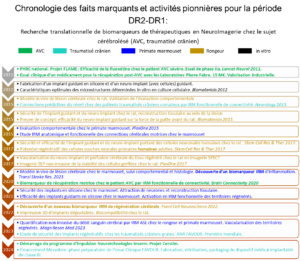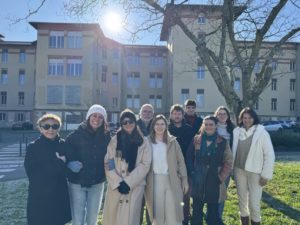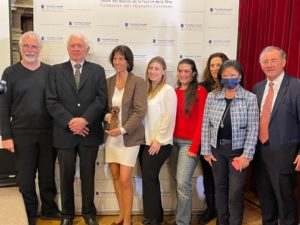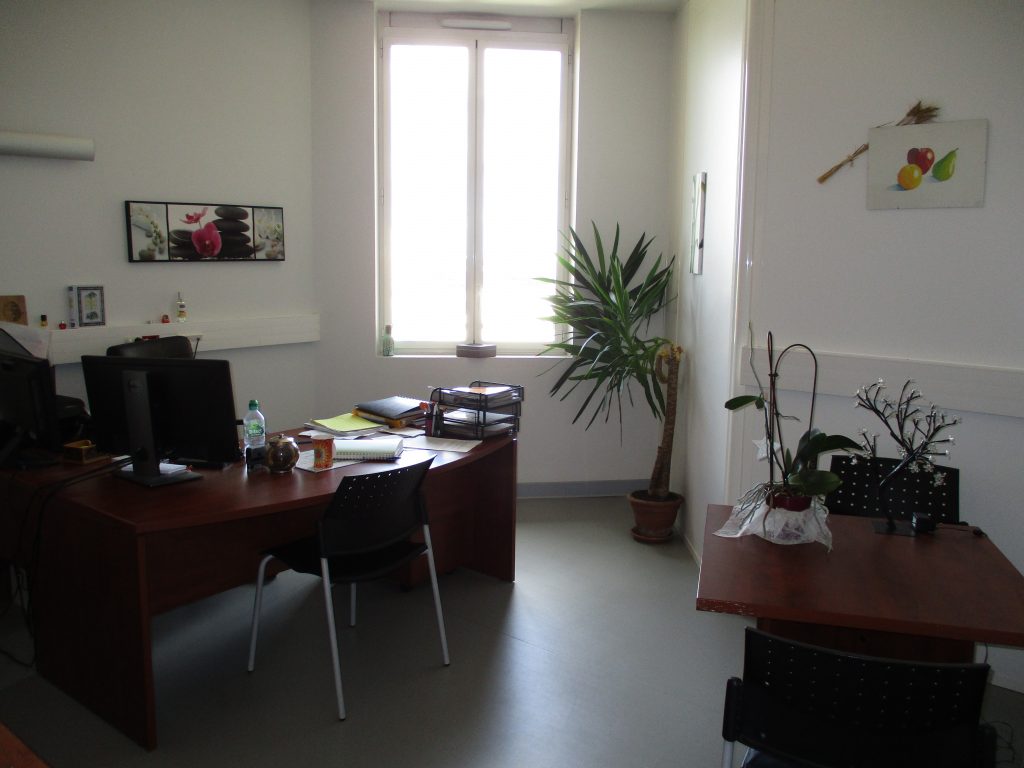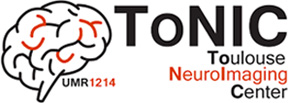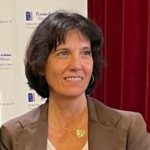Recherche translationnelle en santé,
technologie pour la santé et recherche clinique

- > iDREAM / Axe transversal : Thérapeutiques
- > iDREAM / Titulaires & Contractuels iDREAM
- > iDREAM / Axe 1 : Imagerie de la réparation cérébrale
- > iDREAM / Axe 2 | 🚧 : Adaptation et réadaptation…
Travaille sur
- > Intranasal administration of enteric glia is safe and promotes neural tissue reconstruction in a rat model of brain injury
Nina Colitti, Maylis Combeau, Franck Desmoulin, Lorenne Robert, Costanza Simoncini, Edwige Rice, Isabelle Loubinoux and Carla Cirillo
FENS Regional Meeting FRM 2023
Algarve Portugal
- > In vivo biocompatibility assessment of 3D printed hydrogels and PCL, MRI follow-up.
Julien Clauzel, Lorenne Robert, Nina Colitti, Maylis Combeau, Wafae Labriji, Franck Desmoulin, Adrien Brilhault, Carla Cirillo, Isabelle Loubinoux.
FENS Regional Meeting FRM 2023
Algarve Portugal
- > Regenerative Brain Scaffold
Maylis Combeau, Nina Colitti, Julien Clauzel, Lorenne Robert, Wafae Labriji, Franck Desmoulin, Isabelle Loubinoux
FENS Regional Meeting FRM 2023
Algarve Portugal
- > Use of pCASL MRI sequence to study brain perfusion and vascular permeability after Blood Brain Barrier opening: limitations and perspectives.
Wafae Labriji, Julien Clauzel, Nina Colitti, Carla Cirillo, Isabelle Loubinoux, Franck Desmoulin
FENS 2022 (Federation of European Neurosciences Societies) –
- > FIVE-WEEK INTRANASAL NERVE GROWTH FACTOR TREATMENT IS SAFE AND FAVORS BRAIN NEUROGENESIS
Nina Colitti, Franck Desmoulin, Wafae Labriji, Alice Le Friec, Lorenne Robert, Amandine Michaux, Fabrice Conchou, Carla Cirillo, and Isabelle Loubinoux,
FENS 2022 (Federation of European Neurosciences Societies) _ 9-13 juillet 2022 à Paris
- > FIVE-WEEK NERVE GROWTH FACTOR TREATMENT IS SAFE FOR BRAIN REPAIR
Nina Colitti, Franck Desmoulin, Wafae Labriji, Alice Le Friec, Lorenne Robert, Amandine Michaux, Fabrice Conchou, Carla Cirillo, and Isabelle Loubinoux,
ADPD 2022 (International Conference on Alzheimer’s and Parkinson’s Diseases and related neurological disorders) – 14-20 mars 2022 , Barcelone, Espagne.
- > Utilisation de la séquence pCASL pour l’étude de la perfusion et la perméabilité vasculaire après ouverture de la BHE: Limitations et perspectives.
W. Labriji, C. Simoncini, C. Cirillo, J. L. Mesta, C. Lafon, L. Hirschler, J. M. Warnking, E. L. Barbier, I. Loubinoux, F. Desmoulin
5e congrès scientifique de la Société Française de Résonance Magnétique en Biologie et Médecine (SFRMBM), 27-29 septembre 2021, Lyon.
- > Molecular gels from alkylgalactonamides : from neuronal cell culture to 3D printing.
Chalard A., L.Vaysse, , P. Joseph, L. Malaquin, S. Souleille, B. Lonetti, JC. Sol, I. Loubinoux J. Fitremann.
XXIX International Materials Research Congress, 18-23 aout 2019, Cancun, Mexique.
- > Glia isolated from adult gut generates progenitors of the enteric nervous system: an alternative source of replacement cells for regenerative strategies.XIV European Meeting on Glial Cells in Health and Disease, Porto, 10-13 July 2019 - Portugal
Carla Cirillo, Sarah Lionnet, Alice Le Friec, Lorenne Robert, Franck Desmoulin, Isabelle Loubinoux
- > Supramolecular gels from simple N-Alkyl-D-galactonamides: from neuronal cells culture to 3D-printing.SupraBio 2019, International Symposium on Suprabiomolecular Systems, 6th edition 15-17 May 2019 à Barcelone, Espagne.
Juliette Fitremann, Anaïs Chalard, Laurence Vaysse, Isabelle Loubinoux, Jean-Christophe Sol, Barbara Lonetti, Sandrine Souleille, Pierre Joseph, Laurent Malaquin.
- > Supports de culture à base de gels supramoléculaires pour la culture de cellules neuronales.Journée thématique de la Stratégie Régionale de l'Innovation, "Occitanie: émergence d'un leader en thérapie et ingénierie cellulaire",19 février 2019 à Montpellier, France.
Juliette Fitremann, Anaïs Chalard, Pierre Joseph, Laurent Malaquin, Sandrine Souleille, Barbara Lonetti, Jean-Christophe Sol, Isabelle Loubinoux, Laurence Vaysse
- > Gels moleculaires d’alkyl-galactonamides pour la croissance en 3d de cellules neuronales47e colloque national du Groupe Français d’études et d’applications des Polymères (GFP 2018), 26-29 Novembre 2018, Toulouse, France.
J. Fitremann, A. Chalard, L. Vaysse, P. Joseph, L. Malaquin, S. Souleille, B. Lonetti, J.-C. Sol, I. Loubinoux.
- > Simple synthetic gels from self-assembling alkyl galactonamides for 3d neuronal cell growth.International Conference on Self-Assembly of Colloidal Systems (SACS’18), 20-22 Septembre 2018 Bordeaux, France
J. Fitremann, A. Chalard, P. Joseph, L. Malaquin, S. Souleille, B. Lonetti, J.-C. Sol, I. Loubinoux, L. Vaysse
- > Sugar-based supramolecular gelators as scaffolds for neuronal cell growth.The 31st Australian Colloid and Surface Science Student Conference, January 29 - February 1, 2018, Warrnambool, Victoria, Australia
A. Chalard, L. Vaysse, D. Bordignon, P. Joseph, L. Malaquin, I. Loubinoux, J. Fitremann.
- > Sugar-Based Supramolecular Gelators as Scaffolds for 3D-Neuronal Cell Growth.28th European Conference on Biomaterials, ATHENES - GRECE
Anaïs Chalard, Laurence Vaysse, Pierre Joseph, Laurent Malaquin, Isabelle Loubinoux, Juliette Fitremann.
- > Quantitative imaging of cell viability after graft in stroke rodent model with [18F]FHBG.Congrés EANM - European Association of Nuclear Medicine - BARCELONE
Salabert A.S, Vaysse L, Beaurain M, Alonso M, Besombes J, Loubinoux I, Tafani M, Payoux P
- > Sugar-based supramolecular gelators as scaffolds for neuronal cell growth.16th European Student Colloid Conference, FLORENCE - ITALIE Obtenu Prix de la meilleure présentation.
Anaïs Chalard, Laurence Vaysse, Pierre Joseph, Laurent Malaquin, Isabelle Loubinoux, Juliette Fitremann.
- > « Des gélifiants supramoléculaires pour la culture de neurones en 3D. Impact de la structure des gels sur la croissance cellulaire et caractérisation en 3D ».Workshop Biofabrication & Cancer, 19 juin 2017- TOULOUSE
J. Fitremann, A. Chalard, P. Joseph, L. Malaquin, I. Loubinoux, L.Vaysse
- > Sugar-based supramolecular gelators as scaffolds for neuronal cell growth ».6th European Student Colloid Conference, June 19-22, 2017 Florence,Italie. Obtenu Prix de la meilleure communication orale.
A. Chalard, L.Vaysse, D. Bordignon, P. Joseph, L. Malaquin, I. Loubinoux, J. Fitremann.
Abstracts rédigés ou co-rédigés
- > 78- In vivo biocompatibility assessment of 3D printed bioresorbable polymers for brain tissue regeneration. A feasibility study.Regen Ther. 2024 Oct 23;26:941-955. doi: 10.1016/j.reth.2024.10.004.
Clauzel J, Colitti N, Combeau M, Labriji W, Robert L, Brilhault A, Cirillo C, Desmoulin F, Raymond-Letron I, Loubinoux I.
- > 67- Diffusion tensor imaging and gray matter volumetry to evaluate cerebral remodeling processes after a pure motor stroke: a longitudinal study.J Neurol. 2024 Sep 3. doi: 10.1007/s00415-024-12648-y.
Loubinoux I, Lafuma M, Rigal J, Colitti N, Albucher JF, Raposo N, Planton M, Olivot JM, Chollet F.
- > 35- Motor Imagery and Paired Associative Stimulation in Poststroke Rehabilitation: Dissociating Motor and Electrophysiological Effects.Appl. Sci. 2023, 13(10), 6063; https://doi.org/10.3390/app13106063.
Nabila Brihmat, Evelyne Castel-Lacanal, Mohamed Tarri, Benoit Lepage, Emmeline Montane, Camile Cormier, Xavier de Boissezon, David Gasq, Isabelle Loubinoux, Philippe Marque.
- > 2- Evidence of cerebral hypoperfusion consecutive to ultrasound-mediated blood-brain barrier opening in rats.Magn Reson Med. 2023 Jan 23. doi: 10.1002/mrm.29596.
Labriji W, Clauzel J, Mestas JL, Lafond M, Lafon C, Salabert AS, Hirschler L, Warnking JM, Barbier EL, Loubinoux I, Desmoulin F.
- > 55- Long-Term Intranasal Nerve Growth Factor Treatment Favors Neuron Formation in de novo Brain Tissue.Front Cell Neurosci. 2022 Jul 19;16:871532. doi: 10.3389/fncel.2022.871532.
Colitti N, Desmoulin F, Le Friec A, Labriji W, Robert L, Michaux A, Conchou F, Cirillo C, Loubinoux I.
- > 44- Present and future avenues of cell-based therapy for brain injury: The enteric nervous system as a potential cell source.Brain Pathol. 2022 Jun 30:e13105. doi: 10.1111/bpa.13105.
Hacene S, Le Friec A, Desmoulin F, Robert L, Colitti N, Fitremann J, Loubinoux I, Cirillo C.
- > 49- Cross-Modal Functional Connectivity of the Premotor Cortex Reflects Residual Motor Output After Stroke.Brain Connect. 2020 Jun;10(5):236-249. doi: 10.1089/brain.2020.0750.
Brihmat N, Tarri M, Gasq D, Marque P, Castel-Lacanal E, Loubinoux I.
- > 12- Kinematic parameters obtained with the ArmeoSpring for upper-limb assessment after stroke: a reliability and learning effect study for guiding parameter use.J Neuroeng Rehabil. 2020 Sep 29;17(1):130. doi: 10.1186/s12984-020-00759-2.
Brihmat N, Loubinoux I, Castel-Lacanal E, Marque P, Gasq D.
Voir la publication - > 19- A Reproducible New Model of Focal Ischemic Injury in the Marmoset Monkey: MRI and Behavioural Follow-Up.Transl Stroke Res. 2020 Apr 6. doi: 10.1007/s12975-020-00804-1.
Le Friec A, Desmoulin F, Demain B, Davoust C, Robert L, Duval T, Rémy F, Cirillo C, Loubinoux I.
Voir la publication
Voir la publication
<a
Voir la publication - > 52- Controlling for lesions, kinematics and physiological noise: impact on fMRI results of spastic post-stroke patients.MethodsX. 2020 Sep 9;7:101056. doi: 10.1016/j.mex.2020.101056. eCollection 2020.
Brihmat N, Boulanouar K, Darmana R, Biganzoli A, Gasq D, Castel-Lacanal E, Marque P, Loubinoux I.
Voir la publication - > 52- Post-stroke remodeling processes in animal models and humansJ Cereb Blood Flow Metab. 2019 Oct 23:271678X19882788. doi: 10.1177/0271678X19882788.
Cirillo C, Brihmat N, Castel-Lacanal E, Le Friec A, Barbieux-Guillot M, Raposo N, Pariente J, Viguier A, Simonetta-Moreau M, Albucher JF, Olivot JM, Desmoulin F, Marque P, Chollet F, Loubinoux I.
Voir la publication - > 53- Direct laser fabrication of free-standing PEGDA-hydrogel scaffolds for neuronal cell growth. 3D hydrogel cross porous woodpile architecture.Materials Today. 2018. 21:3; 315-6. I.F. 21.7
Accardo A, Blatché MC, Courson R, Loubinoux I, Vieu C, Malaquin L.
- > 41- Interfacing cells with microengineered scaffolds for neural tissue reconstruction.Brain Res Bull. 2019 Jul 23. pii: S0361-9230(19)30089-9. doi: 10.1016/j.brainresbull.2019.07.020.
Accardo A, Cirillo C, Lionnet S, Vieu C, Loubinoux I.
Voir la publication - > 32-Wet spinning and radial self-assembly of a carbohydrate low molecular weight gelator into well organized hydrogel filaments.Nanoscale. 2019.Jun 10. doi: 10.1039/c9nr02727k
Chalard A, Joseph P, Souleille S, Lonetti B, Saffon-Merceron N, Loubinoux I, Vaysse L, Malaquin L, Fitremann J.
- > 58- Focal Malonate Injection Into the Internal Capsule of Rats as a Model of Lacunar Stroke.Front Neurol. 2018 Dec 11;9:1072. doi: 10.3389/fneur.2018.01072
Cirillo C, Le Friec A, Frisach I, Darmana R, Robert L, Desmoulin F, Loubinoux I.
- > 59- Serotonin Selective Reuptake Inhibitors (SSRIs) and Stroke.Curr Neurol Neurosci Rep. 2018 Oct 23;18(12):100. doi: 10.1007/s11910-018-0904-9.
Chollet F, Rigal J, Marque P, Barbieux-Guillot M, Raposo N, Fabry, Albucher JF, Pariente J, Loubinoux I.
- > 64- Two-photon lithography and microscopy of 3D hydrogel scaffolds for neuronal cell growth.Phys. Eng. Express 2018. vol4:2. https://doi.org/10.1088/2057-1976/aaab93
Accardo A, Blatché MC, Courson R, Loubinoux I, Vieu C, Malaquin L.
- > 21- Simple Synthetic Molecular Hydrogels from Self-Assembling Alkylgalactonamides as Scaffold for 3D Neuronal Cell Growth.ACS Appl Mater Interfaces. 2018 May 14. doi: 10.1021/acsami.8b01365.
Chalard A, Vaysse L, Joseph P, Malaquin L, Souleille S, Lonetti B, Sol JC, Loubinoux I, Fitremann J.
- > 68- Five-day course of paired associative stimulation fails to improve motor function in stroke patients.Ann Phys Rehabil Med. 2017 Dec 20. pii: S1877-0657(17)30455-4. doi: 10.1016/j.rehab.2017.11.002.
Tarri M, Brimhat N, Gasq D, Lepage B, Loubinoux I, De Boissezon X, Marque P, Castel-Lacanal E.
- > 42- Five-day course of paired associative stimulation fails to improve motor function in stroke patients.Ann Phys Rehabil Med. 2018 Mar;61(2):78-84. doi: 10.1016/j.rehab.2017.11.002. Epub 2017 Dec 20.
Tarri M, Brihmat N, Gasq D, Lepage B, Loubinoux I, De Boissezon X, Marque P, Castel-Lacanal E.
- > 71- Enhancing Plasticity of the Central Nervous System: Drugs, Stem Cell Therapy, and Neuro-Implants.Neural Plast. 2017;2017:2545736. doi: 10.1155/2017/2545736. Epub 2017 Dec 17. Review.
Le Friec A, Salabert AS, Davoust C, Demain B, Vieu C, Vaysse L, Payoux P, Loubinoux I.
- > 65- Action, observation or imitation of virtual hand movement affect differently regions of the mirror neuron system and the default mode network.Brain Imaging Behav. 2017 Dec 14. doi: 10.1007/s11682-017-9804-x.
Brihmat N, Tarri M, Quidé Y, Anglio K, Pavard B, Castel-Lacanal E, Gasq D, De Boissezon X, Marque P, Loubinoux I.
Voir la publication - > 58- Regenerative potential of primary adult human neural stem cells on micropatterned bio-implants boosts motor recovery.Stem Cell Res Ther. 2017 Nov 7;8(1):253. doi: 10.1186/s13287-017-0702-3.
Davoust C, Plas B, Béduer A, Demain B, Salabert AS, Sol JC, Vieu C, Vaysse L, Loubinoux I.
- > 30- A shear-induced network of aligned wormlike micelles in a sugar-based molecular gel. From gelation to biocompatibility assays.J Colloid Interface Sci. 2017 Oct 15;504:721-730. doi: 10.1016/j.jcis.2017.06.021. Epub 2017 Jun 9.
Fitremann J, Lonetti B, Fratini E, Fabing I, Payré B, Boulé C, Loubinoux I, Vaysse L, Oriol L.
- > 50- Cerebral imaging of post-stroke plasticity and tissue repair.Rev Neurol (Paris). 2017 Oct 3. pii: S0035-3787(17)30734-8. doi: 10.1016/j.neurol.2017.09.007.
Loubinoux I, Brihmat N, Castel-Lacanal E, Marque P.
- > 33- Multi-photon Direct Laser Writing of 3D Niches for Omnidirectional Cell Colonization.Small. 2017 May 30. doi: 10.1002/smll.201700621.
Accardo A, Blatchea MC, Coursona R, Loubinoux I, Thibault C, Malaquin L, Vieu C.
- > Anodal tDCS Combined With Radial Nerve Stimulation Promotes Hand Motor Recovery in the Acute Phase After Ischemic Stroke.Neurorehabil Neural Repair. 2015 Sep;29(8):743-54. doi: 10.1177/1545968314565465.
Sattler V, Acket B, Raposo N, Albucher JF, Thalamas C, Loubinoux I, Chollet F, Simonetta-Moreau M.
- > Corticospinal Tract Tracing in the Marmoset with a Clinical Whole-Body 3T Scanner Using Manganese-Enhanced MRI.PLoS One. 2015 Sep 23;10(9):e0138308. doi: 10.1371/journal.pone.0138308.
Demain B, Davoust C, Plas B, Bolan F, Boulanouar K, Renaud L, Darmana R, Vaysse L, Vieu C, Loubinoux I.
- > Micropatterned bioimplant with guided neuronal cells to promote tissue reconstruction and improve functional recovery after primary motor cortex insult.Biomaterials. 2015 Jul;58:46-53. doi: 10.1016/j.biomaterials.2015.04.019.
Vaysse L, Beduer A, Sol JC, Vieu C, Loubinoux I.
- > Strength and fine dexterity recovery profiles after a primary motor cortex insult and effect of a neuronal cell graft.Behav Neurosci. 2015 Aug;129(4):423-34. doi: 10.1037/bne0000067.
Vaysse L, Conchou F, Demain B, Davoust C, Plas B, Ruggieri C, Benkaddour M, Simonetta-Moreau M, Loubinoux I.
- > Stem cells and motor recovery after stroke.Ann Phys Rehabil Med. 2014 Nov;57(8):499-508. doi: 10.1016/j.rehab.2014.08.008. Review.
Loubinoux I, Demain B, Davoust C, Plas B, Vaysse L.
- > Post-stroke hemiplegia rehabilitation: evolution of the concepts.Ann Phys Rehabil Med. 2014 Nov;57(8):520-9. doi: 10.1016/j.rehab.2014.08.004. Epub 2014 Aug 23.
Marque P, Gasq D, Castel-Lacanal E, De Boissezon X, Loubinoux I.
- > Transcranial magnetic stimulation in brain injury.Annales Françaises d’Anesthésie et de Réanimation, (2014). 33(2) :83-87.
Castel-Lacanal, E., Tarri, M., Loubinoux, I., Gasq, D., de Boissezon, X., Marque, P. and Simonetta-Moreau, M.
Publications rédigées ou co-rédigées
Conferences récentes
Remise Prix Fondation Gueules Cassées 2021
Conference Drugs for Post-Stroke Recovery 2021
Conference Post-Stroke Brain plasticity 2020
Biosktech
Isabelle Loubinoux is an engineer from AgroParisTech, Institute National Agronomique Paris Grignon. She obtained her PhD in Medical Imaging from University of Paris XI on the progression monitoring of the ischemic lesion with diffusion Magnetic Resonance Imaging in experimental rodent models of stroke and testing of pharmacological treatments to salvage the ischemic penumbra. After a post-doctoral training in the Inserm unit of François Chollet in Toulouse, she became an Inserm junior researcher. Her project was to find imaging biomarkers for pharmacological treatments that improve motor recovery of impaired post-stroke patients. Hemiplegia is the more common deficit. First cause of handicap, stroke has a heavy socio-economical cost. She was the first to evidence serotoninergic modulation of motor brain activity with fMRI. She tested serotoninergic and mono-aminergic drugs during her “Contrat d’interface 2006-2011: Innovative strategies in Stroke” with the Toulouse University Hospital. Functional Magnetic Resonance Imaging showed that such drugs were able to specifically modulate motor cerebral activation when a patient uses his/her hand in correlation with improved motor performance. At that moment, no pharmacological treatment has been validated in human clinics when deficits are constituted. She demonstrated that fluoxetine, Prozac®, apart from being an antidepressant, is a serotoninergic drug that significantly improved motor outcome and augmented the ratio of independent patients (Chollet F et al., I Loubinoux, Lancet Neurology, 2011, highly cited paper). She spent 5 months at NIH, Bethesda, USA in 2006 in Leo Cohen’s laboratory bringing her MRI expertise in this Transcranial Magnetic Stimulation laboratory.
Isabelle Loubinoux has conducted the Inserm team “Therapeutic innovations in cerebrovascular disease” in 2010-2015. She became a senior Inserm Researcher in 2011. She now leads the Inserm iDREAM team 2016-2025: “Innovation in Drug, Regenerative mEdecine, stimulAtion, and modulation of Motor plasticity and recovery”. The research program of the team relies on the Imaging biomarkers of mechanisms for cognitivo-motor functions after stroke and Traumatic Brain Injury (TBI), from the acute phase to the chronic phase. It uses neuroimaging and brain stimulation techniques that promote cerebral plasticity, with the aim of improving recovery. The team has three axes. Axis 1: Therapeutics after acute brain injury and MRI biomarkers, Axis 2: Multimodal imaging, post-lesional signatures and predictors, Axis 3: Neurobiomechanics, biomarkers of physiologic and pathologic motricity. The team includes scientists in neuroimaging, biomechanics, cellular biology, and clinicians in neurology, anesthesiology and critical care, neurosurgery, neurorehabilitation, neurophysiology, and psychiatry. The expertise of the group is highly translational since it goes from cells, rodents, non-human primates to humans (healthy subjects, athletes and patients).
Her project aims to determine experimentally the imaging biomarkers of therapeutical strategies that will have a major clinical impact on future clinical treatments for stroke or TBI specifically in highly invalidated patients. Apart from serotoninergic drugs, other hopes also rely on brain stimulation or cellular therapy. After the fluoxetine clinical trial, the decision was then taken to target those patients that remain very invalided and dependent despite rehabilitation. Two projects are on-going: one aims to improve non-invasively brain activity in chronic stroke patients (Cerstim project) and the other one aims to regenerate the lesion in traumatic brain injured patients needing decompressive craniectomy (Favour project). In Cerstim (booster program Neurotechnologies Inserm 2024), the objective is to resynchronize brain activity with transcranial alternating current stimulation of motor cortex and cerebellum (collaboration with Charlotte Rosso, Institut du Cerveau, Paris). For the Favour project, Isabelle Loubinoux build a strong collaboration with clinicians of Toulouse Hospital (Pr T. Geeraerts, critical care department, Pr J.-C Sol, neurosurgery department). The projects Innov-in-Stroke, Neuraxe, Recover, Favour and Matrix were then successively launched to regenerate brain tissue in the lesion and create appropriate long-distance connections. Given that the lesion is a quite hostile environment for stem cells and that 95% will die, biomaterials were envisioned to increase cell survival and direct axonal growth. Indeed, a precise organization is a key factor of brain functioning. Her team was the first to make the proof of concept that guiding neuro-implants inserted in the brain lesion were safe in marmosets and improved motor performance in rats (Vaysse et al., Biomaterials 2015; Davoust et al., Stem Cell Res & Ther 2017; Le Friec et al., Neural Plasticity 2019; Thèse Le Friec 2020). MRI anatomical and functional biomarkers of tissue regeneration were found (ASL perfusion, fMRI). fMRI demonstrated the functionality of implants. A clinical trial, FAVOUR (ANR 2023-2028 and Messidore 2024-2027 funds), assessing the safety of guiding implants inserted during the cranioplasty of cranial flap repositioning after TBI is in preparation. Isabelle Loubinoux’ group has set up a laboratory to be fabricant of clinical grade implants (ISO 13485). First generation implants are made of silicone functionalized with proteins and are not degradable. They do not induce inflammation, they attract progenitors and immature cells that differentiate. The neo-tissue formed around the implants is vascularized, contains astrocytes, immature neurons and mature neurons and the latter have been found in 4 marmosets. For the clinical trial, blood biomarkers will be searched in collaboration with Anna Rosell in Barcelona. This trial will be a first-in-man.
On going projects aim to progress beyond first simple architectures of implants proposed so far for brain regeneration with an original architecture dedicated to cortex regeneration (Recover and Matrix projects). Recover led to a patent PCT/EP2024/073072. It was also done in collaboration with M. Becker eager to test a new biomaterial for Brain regeneration. Matrix project develops degradable implants that are 3D printed, designed to regenerate the entire lesion and to organize the neo-tissue (CEA Tech Occitanie, ICGM Montpellier, LabHPEC (ENVT), M Becker (Departments of Chemistry, Mechanical Engin. and Materials Science, Biomed. Engin. and Orthopaedic Surgery, Duke Univ., Durham, NC), and Healshape (a start-up in Lyon manufacturing 3D printed hydrogels for mammal reconstruction) interesting in our patent.
Finally, we bet on a cell source transferable to the clinics: enteric cells isolated from the human « second brain », the duodenum or intestine that could allow an autologous graft. Carla Cirillo, an italian biologist, has been recruited CRCN at CSS4 Inserm committee (Neurosciences) and now manage this project. Small biopsies can be performed safely in patients and the great advantage is no need of genetic manipulation of cells.
